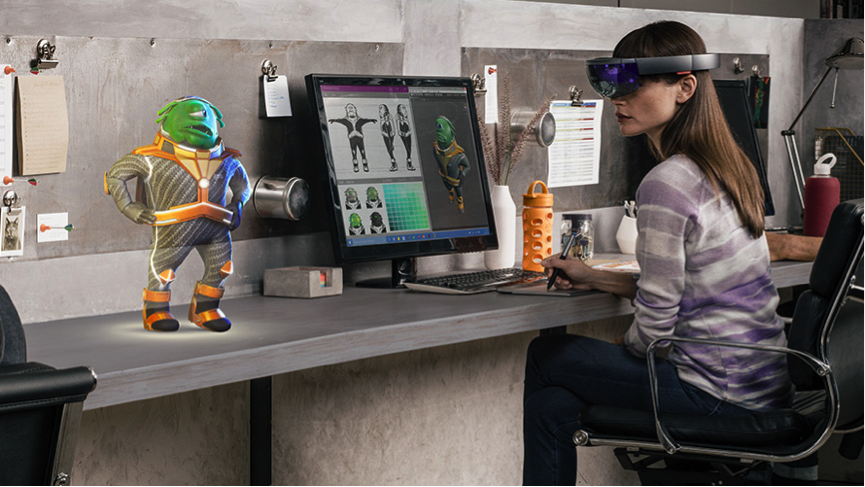In this set of articles, we’re going through the 5 biggest trends that we think will make the future of apps in 2017. After the vocal interfaces, let’s talk today about the newcomer in the family of the reality-aware apps: the Mixed Reality.
Mixed reality replaces Augmented Reality
Forget about Augmented Reality, it has had its momentum with Pokémon GO, but that’s pretty much the only true success of Augmented Reality. The reason is simple: the integration with the reality is never of a very high quality, often leading to a disappointing experience. That’s not the programmers’ fault, that’s just nearly impossible to integrate correctly and in real-time virtual objects given the current camera hardware in our smartphones and tablets.
But here comes Mixed Reality and for those who have already tested the HoloLens by Microsoft, you know that the killer feature is not the holograms… this is its Spatial Understanding feature: when you start the HoloLens, the device scans its surrounding with its cameras and depth sensors. Thanks to that it is able to create a virtual map of the room you’re in, including the objects such as a table, a couch, their measures, etc.
How does it work?
And that’s really where the magic happens: thanks to this map, the virtual objects are perfectly positioned and scaled to your environment, they are also “stable”: you can look elsewhere, come back to the object, turn around it, it will all look like it has always been there in the reality.
That’s why it is called “Mixed Reality”: it is perfectly integrating the virtual into the reality.
We’ve not seen a lot of those cases lately, mainly because there are very few devices equipped with the right hardware (and none of the available devices are mainstream), but several initiatives make us think that we might see first commercial applications during this year:
- Unofficial sources at Microsoft say that the HoloLens technology is being made available to several hardware manufacturers so that more devices can reach the market.
- Google has started working two years ago on Google Tango which is basically the Spatial Understanding technology of HoloLens applied to smartphones and tablets: Lenovo has just released the first Tango-enabled smartphone with its Phab 2 Pro and Asus just announced its ZenFone AR integrating Google Tango.
Foreseen applications are quite niche currently but, still, let’s cite B2B cases such as training, remotely assisting lone workers, looking through the walls to have the position of cables and tubing or walking into virtual buildings before they’re built.
And for B2C?
For B2C, the killer application seems to be the one that enables consumers to perfectly position at home virtual furniture they’re about to buy: “will this couch be OK with my room and my decoration?”. Remember, devices with this technology have a comprehensive view of the room, they know where the tables are, how far away are the walls, what’s the distance between the objects: your virtual couch will be perfectly positioned on your floor and correctly scaled so that – finally and unlike traditional AR – it gives you a realistic view of the virtual object in its environment. Just look at this article and this video.
Other case, BMW has recently announced it will be trying the Google Tango technology to show clients different configurations of its cars under realistic conditions. My personal belief is that VR is more adapted than MR for car dealers, but yet, any of these two technologies would have avoided me that huge “I did not understand the top of my car would be that color” surprise when I got my brand new car last year (true story).
Unfortunately, everything’s not perfect yet, but we’re clearly on our way to what was missing to Augmented Reality: a better sense of Reality.
To have a better view on all of this, the best is always to experiment by yourself, and here is how to do so:
- If you can afford it, spend some money on the Lenovo Phab 2 Pro or the Asus ZenFone AR to get used to AR/MR applications integrating spatial understanding.
- With these phones, try the Tango-enabled apps on this page from Google.
- Compare it to standard Augmented Reality apps and see how different Mixed Reality can be.
- We have the HoloLens and Tango-enabled devices at the office, just contact your Tapptic representative to schedule a demo!


